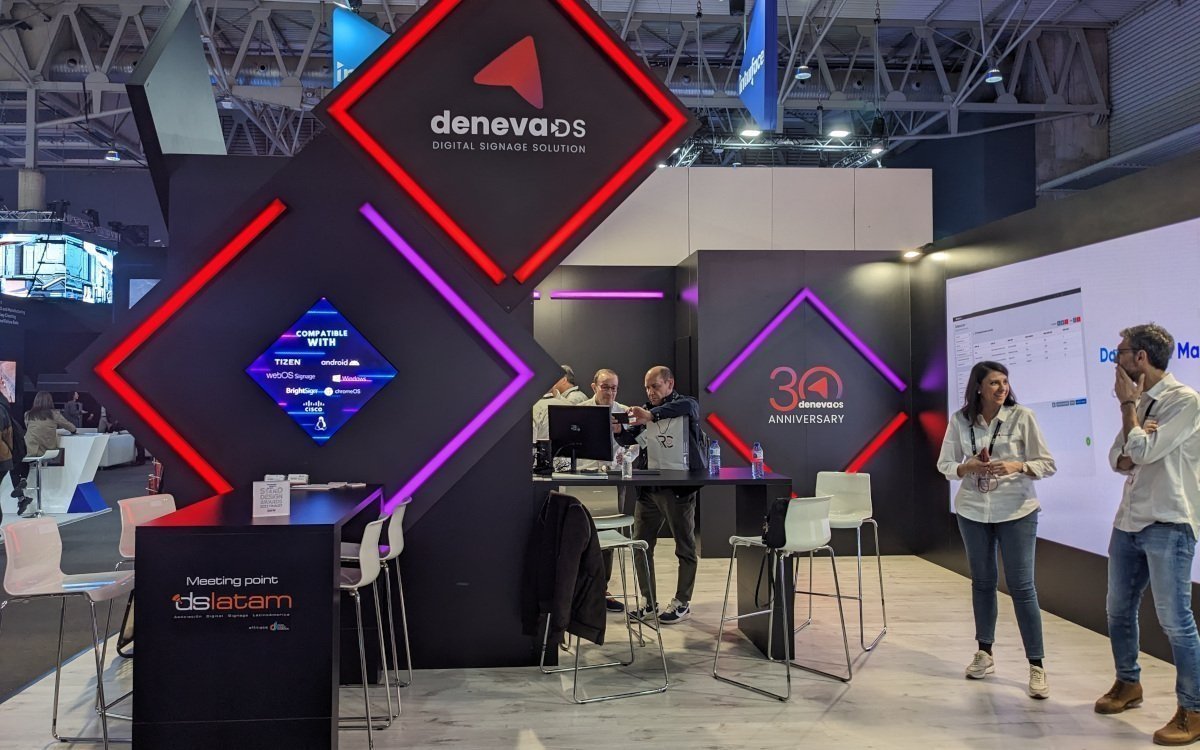This is what Madrid's Metro has in common with Inditex's fast-fashion stores: Their digital signage screens run on the CMS Deneva. The software provider has made a name for itself for business critical applications.

Deneva: The Business Critical Experts
The Spanish digital signage software provider Deneva has been active in the market for 30 years but is still considered a hidden champion in the industry. With an installed base of 45,000 endpoints, Deneva already plays in higher European midfield. The customer list reads like the Champions League – Inditex, BBVA Mexico, the Spanish railroad company ADIF, and many metros worldwide.
At home, Icon Multimedia – the parent company of Deneva – is situated in the middle of the Spanish province. Palencia is far away from the glitz and glamour of Madrid or Barcelona. What counts here is performance – and Deneva offers plenty of that. The software company is still run by the three founders. It all started with the development of arcade game software solutions on the Commodore Amiga platform and a text insertion software for broadcast.
From broadcast studios to train stations
The arcade gaming solution was never completed, as the broadcast solution had already found its niche. In the early 1990s, hundreds of local TV stations were broadcasting in Spain – and they all used text insertion. Business had already picked up when a tender from ADIF arrived in the early 2000s. The Spanish state-owned railroad company was looking for a multimedia software for its 750-kilometer Madrid-Barcelona high-speed rail line.
Digital Signage in American metros
The specifications were challenging: the digital signage software was to be connected directly to the railroad’s real-time system in order to calculate train arrival times, display delays, visualize track occupancy, and play loudspeaker announcements. At that time, Deneva already relied on an HTML4-based system and was able to convince in the practical test.
To this day, Deneva is the specialist for digital signage in rail traffic and is one of the few providers certified to connect to the large traffic control centers of Siemens, Thalys Thales, and Alstom. Almost the entire Spanish railroad system runs on Deneva, in addition to the metro systems in Santiago de Chile or Montreal. More than 60 employees work for Deneva who generate half of the company’s sales on the other side of the Atlantic.
Success in the home market
In the beginning of May, Deneva was able to announce another success: Madrid Metro is also upgrading to the Spanish CMS. Since thousands of ads in and on suburban trains and buses are already running on Deneva, this is the first time that the Spanish capital a single provider is responsible for all passenger information on public transport. The biggest advantage: Deneva can now guide and inform passenger flows intermodally in the event of disruptions, and in future also display DooH advertising. The DooH programmatic interfaces have already been developed.
In addition to business-critical applications in rail operations, Deneva is also making a name for itself in the retail industry. Both Inditex and banking group BBVA Mexico have switched from Telefonica On the Spot CMS other renowned CMS to Deneva.
One of the company’s secrets: little show and a lot of performance. Success seems to prove them right: In 2022, Icon Multimedia / Deneva recorded a 26 percent increase in sales. 2023 is also going according to the taste of the three founders.
On premise still in fashion?
On premise instead of cloud – many market observers will wrinkle their noses. But business critical in transportation means being part of the critical infrastructure. Rail operators rely on a secure silo architecture and therefore also on On Premise for digital signage. Siloed solutions also remain relevant in banking. But Deneva also offers cloud-based signage to retail customers on demand.
If you want to get to know Deneva and its creators, founder Rafael Hornos will also be attending DSS Europe 2023 for the first time.
